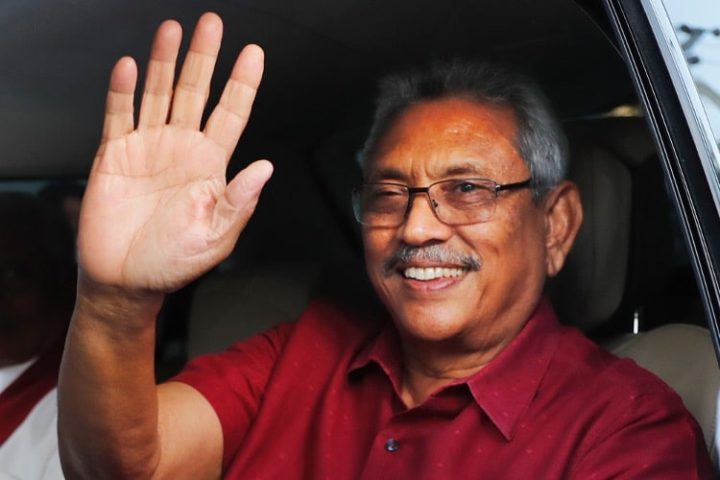
SINGAPORE — Sri Lanka’s former president, Gotabaya Rajapaksa, is slated to head back to his country as early as September 2, following his escape from anti-government protests, according to a spokesman from the Sri Lankan Department of Information.
Currently, arrangements to ensure Rajapaksa’s security in the country are underway, based on media reports. Local media reports on Aug 19 quoted General Secretary Sagara Kariyawasam as saying that his party had requested the incumbent President Ranil Wickremesinghe to “ensure security and necessary facilities” for Rajapaksa’s return.
Rajapaksa’s return to Sri Lanka after spending more than a month overseas indicates that Wickremesinghe is confident about keeping domestic order after arresting key activists who led the nationwide movement protesting Rajapaksa’s financial mismanagement.
Although sources in the Sri Lankan government declined to give The Straits Times, Singapore’s national newspaper, any more information about Rajapaksa’s return, unnamed sources informed Bloomberg that the Sri Lankan government is expected to provide a house in Colombo for the former president. The domestic media in Sri Lanka, such as the Sinhalese-language newspaper Mawbima, first reported on his expected return on Friday. Officials from Wickremesinghe’s office refused media requests for comment.
Rajapaksa, 73, who is largely regarded as a strongman leader, escaped to Singapore via the Maldives with his wife before hundreds of infuriated protestors stormed his residence in Colombo. After arriving in Singapore, Rajapaksa formally tendered his resignation as Sri Lanka’s president on July 14. Subsequently, Rajapaksa moved to Thailand in August. He was granted visas by both Singapore and Thailand for a short-term private stay. He did not request political asylum, nor was he granted it.
While Rajapaksa was abroad, Sri Lanka’s parliament elected then-acting president and six-time former prime minister Ranil Wickremesinghe as the new president. Despite being a member of the United National Party, Wickremesinghe enjoyed the support of Rajapaksa’s Sri Lanka Podujana Peramuna (SLPP), the largest bloc in the 225-member parliament. Notably, Wickremesinghe is an “Agenda Contributor” for the globalist World Economic Forum (WEF).
News of Rajapaksa’s upcoming return to Sri Lanka was met with mixed reactions. Activists who protested Rajapaksa’s economic mismanagement of the country expressed doubts that he would be held accountable for his past actions.
For instance, a senior activist, who declined to be named owing to risk of arrest, remarked to The Straits Times, “If Gotabaya returns, ideally he must be held accountable for his policy mistakes and corruption. But seeing how Ranil acted against citizen protesters, it’s unlikely that his government will take any hard steps against Gotabaya.”
Moreover, there seems to be attempts to ensure that the responsibility for the country’s crisis does not solely fall on Rajapaksa’s shoulders. Mahinda, Rajapaksa’s brother, told Sri Lanka’s Sunday Times in a report published on August 21, after four months of silence, “Gotabaya Rajapaksa is not responsible for all the country’s ills. Everybody including me and the previous governments would have to answer. Unfortunately, he [Gotabaya] acted on the advice of the experts he trusted. Therefore, he cannot be blamed.”
Suffering From Globalist-inspired “Green” Policies
Previously, Rajapaksa’s government was lambasted for its mismanagement of the economy. In a nod to green globalists, the Sri Lankan government had mandated organic farming and criminalized synthetic fertilizers.
Contrary to claims that organic farming methods can produce the same yields as conventional farming, domestic rice production plummeted by 20 percent in just the first six months.
As a result of the fertilizer policies that form a vital aspect of the United Nations’ 2030 Agenda for Sustainable Development, Sri Lanka, a country that was hitherto self-sufficient in rice production, was eventually coerced to import $450 million worth of rice amid escalating domestic rice prices.
Moreover, Rajapaksa’s green policies, inspired by globalist institutions such as the WEF and the United Nations, also decimated the tea crop that was the nation’s source of foreign exchange and a major export.
Currently, Sri Lanka is suffering from a widespread food shortage and a cratering economy. The island nation now owes more than US$51 billion in foreign debt, of which US$28 billion has to be repaid by 2028. Its economy has collapsed under failing foreign exchange reserves, a paucity of essential items such as medicines, and Asia’s highest inflation rate of around 65 per cent. A previous report at The New American quoted Rajith Keerthi Tennakoon, the former Governor of Uva, Southern, and Central Provinces, as saying, “We are a tropical country full of rice paddies and banana plantations, but because of this stupid fertilizer ban, now we don’t even have enough food to feed ourselves.”



